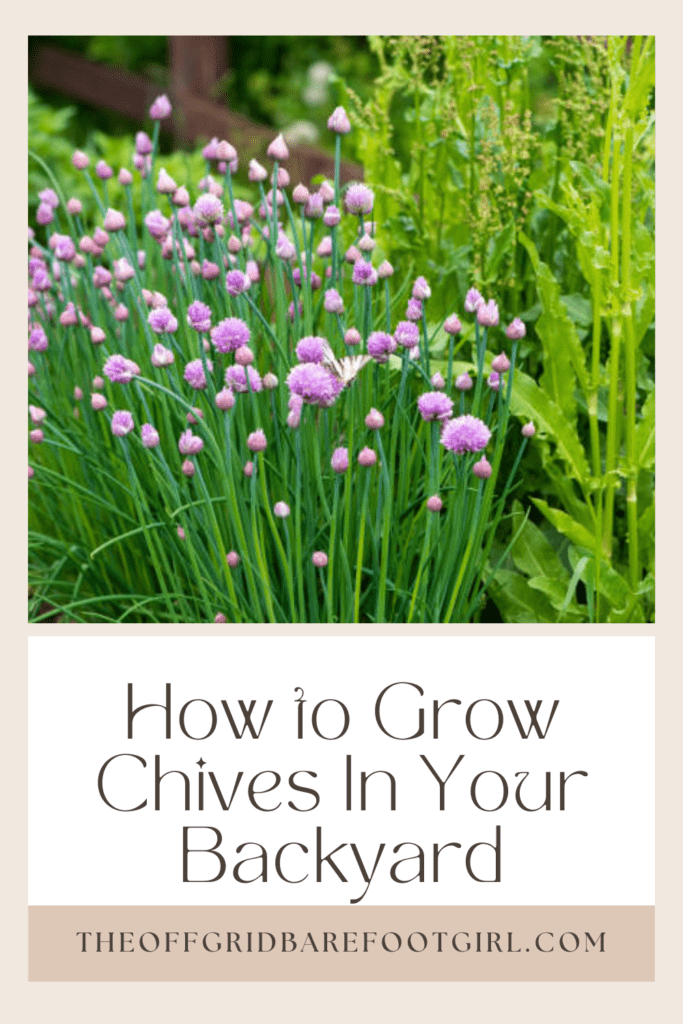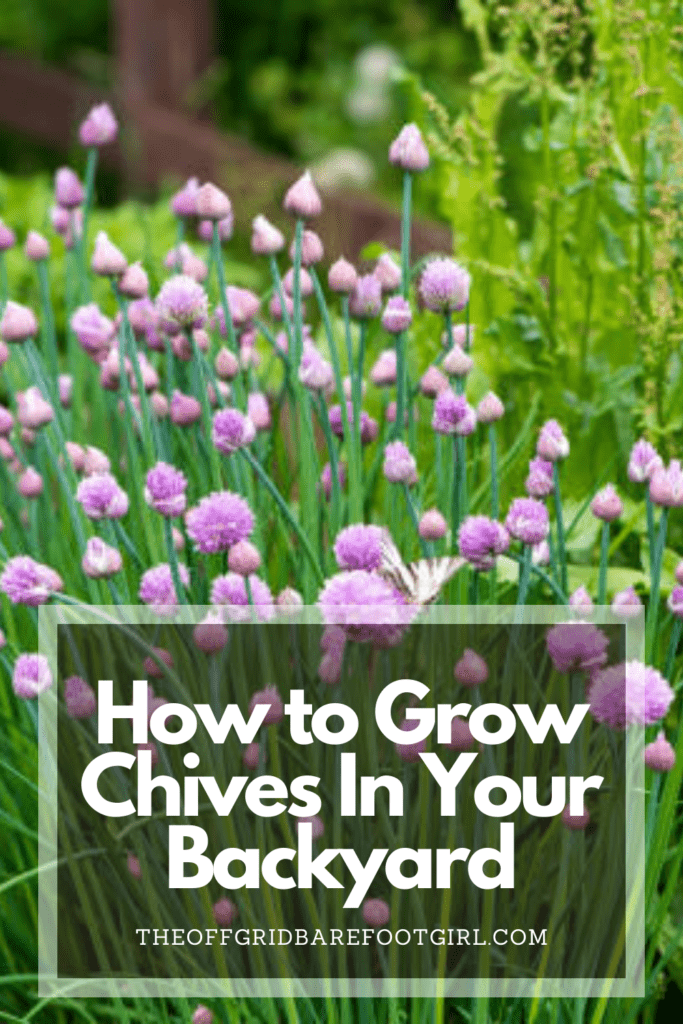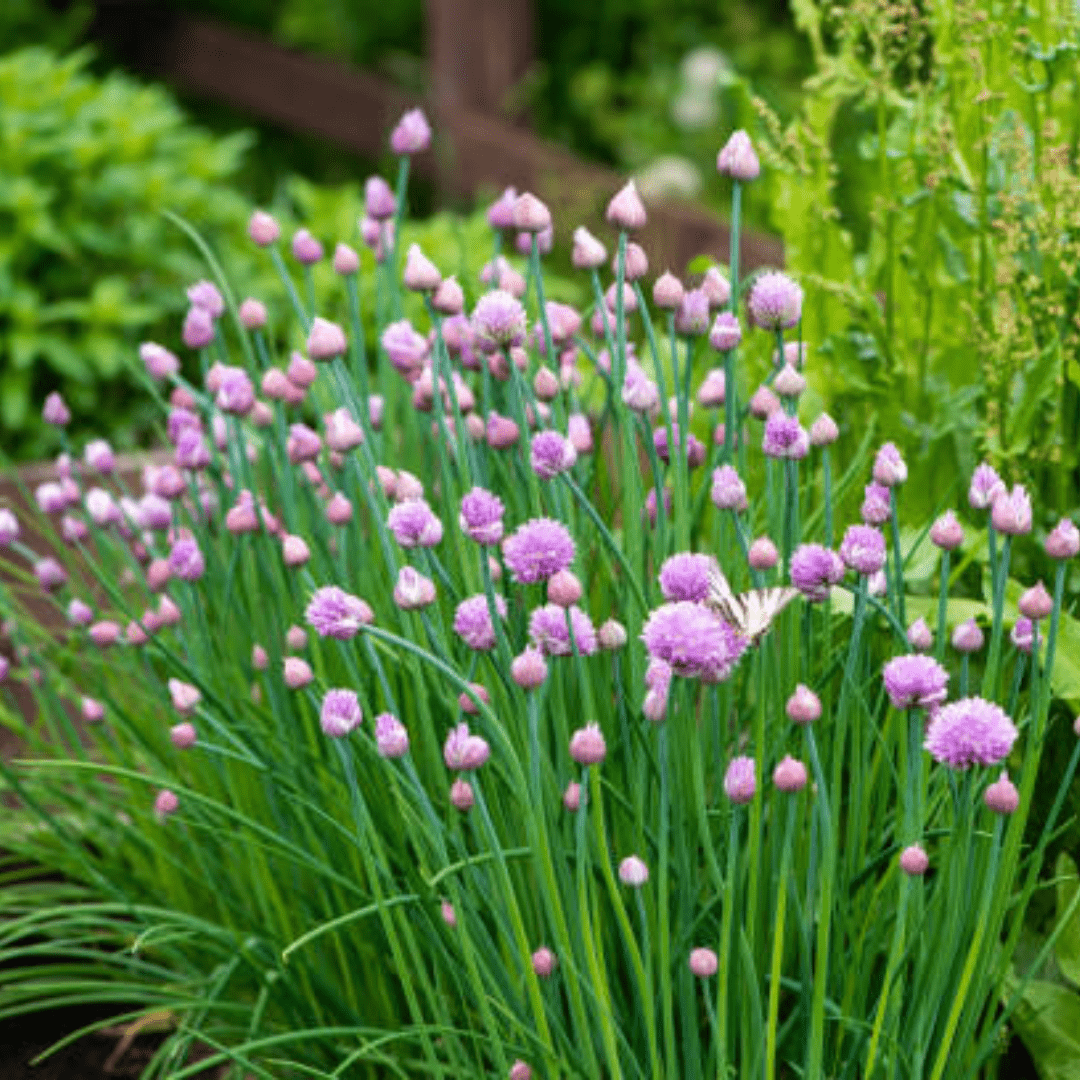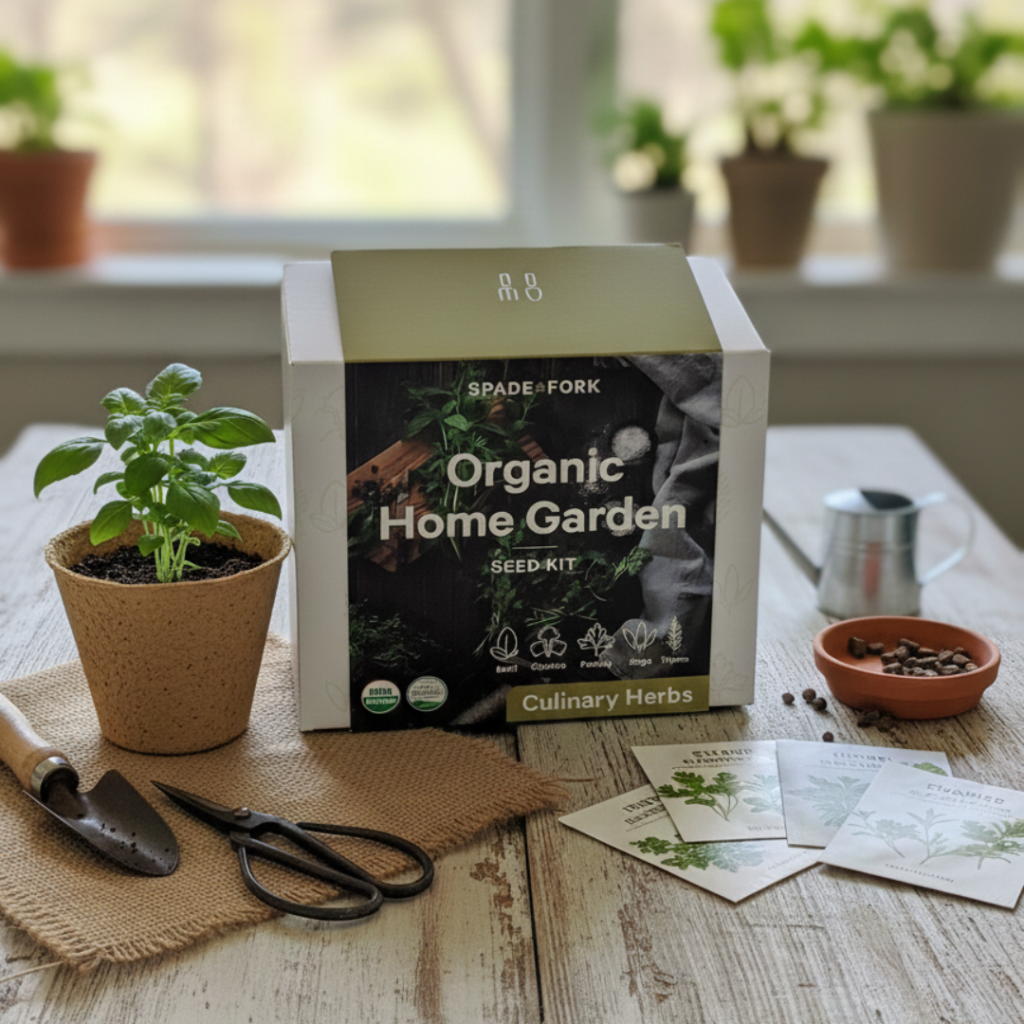Learn how to grow chives in your backyard with simple steps for planting, care, and harvesting. Enjoy fresh, flavorful chives for cooking and herbal remedies.
Growing chives in your backyard is one of the easiest ways to add fresh flavor and gentle nutrition to your meals. These hardy little herbs thrive with minimal care, making them perfect for both beginner and experienced gardeners. Chives not only taste delicious in salads, soups, and scrambled eggs, but their vibrant green leaves also bring a touch of life to any garden.
With just a sunny spot, well-draining soil, and regular watering, chives can flourish year after year. They’re perennial, meaning they’ll return season after season, giving you a steady supply of fresh herbs without much effort. Planting chives in your backyard is a small step toward self-sufficiency, connecting you to the rhythm of growing your own food.
Beyond their culinary uses, chives have subtle medicinal properties that support digestion and overall wellness. Growing your own ensures you have access to fresh, chemical-free herbs that can nourish both body and spirit, aligning perfectly with a holistic, off-grid lifestyle.
This is a pinnable post. Tap or hover over any image in this post to pin to your Pinterest Boards.

Introduction to Growing Chives In Your Backyard
Why Grow Chives?
Chives are like the unsung heroes of the herb garden. They may not have the same fame as basil or parsley, but they sure pack a punch when it comes to flavor. Plus, they’re super easy to grow, even for those of us who struggle to keep a houseplant alive (guilty as charged). So, if you’re looking to add some zing to your dishes and impress your friends with your green thumb skills, growing chives is the way to go.
Benefits of Growing Chives In Your Backyard
Aside from the obvious benefit of having a fresh and tasty herb at your fingertips, chives also have some hidden perks. First of all, they’re a great natural insect repellent. So, if you’re tired of mosquitoes ruining your backyard barbecues, chives might just be your new best friend. They’re also a good source of vitamins A and C, which is a nice bonus for those of us who are always on the hunt for ways to make our diets a little healthier. Plus, let’s be real, nothing beats the satisfaction of snipping a handful of chives straight from your garden and sprinkling them onto your homemade potato salad.
Choosing the Ideal Location for Growing Chives
Sunlight Requirements for Chives
Chives are sun lovers, so make sure to find a spot in your backyard that gets at least six hours of direct sunlight per day. They’re like the divas of the herb world; they need their daily dose of sunshine to shine bright and flourish. If you have a shaded yard, don’t worry! Chives can still grow in partial shade, but they might not be as lush and vibrant.
Soil Conditions for Optimal Chive Growth
Chives are pretty chill when it comes to soil conditions. They can tolerate a wide range of soil types, but they prefer well-draining soil that’s rich in organic matter. If you’re not sure about your soil’s quality, you can always do a simple soil test or add some compost to give it a little boost. Just remember, chives love to thrive in loose and fertile soil, so give them the VIP treatment.
Preparing the Soil for Chive Cultivation
Clearing the Area for Chive Planting
Before you get your chive party started, you’ll want to clear the area of any weeds or debris. Chives like to have their personal space, so it’s best to remove any potential competition that might try to steal their spotlight. Grab your trusty garden gloves and get ready for some light weeding action.
Improving Soil Fertility
It’s a good idea to improve the soil fertility. This can be as simple as adding some organic matter, like compost or well-rotted manure, to give your chives the nutrients they need to thrive. Think of it as giving them a backstage pass to the best nutrients in town. Your chives will thank you with their luscious green leaves.
Planting Chives: Seeds or Transplants?
Growing Chives from Seeds
If you’re feeling adventurous and patient, growing chives from seeds can be a rewarding experience. You can start the seeds indoors and then transplant them outside once they’re strong enough. Just be prepared for a bit of a waiting game, as chives from seeds can take a few weeks to fully establish themselves. But hey, good things come to those who wait, right?
Using Transplants for Faster Results
For those of us who are more on the “instant gratification” side of the gardening spectrum (no judgment here), using chive transplants is the way to go. You can find young chive plants at your local nursery or garden center, and they’re usually ready to be planted straight into your garden. It’s like having a head start on your chive growing adventure. Just remember to give them a proper introduction to their new soil, and they’ll settle in just fine.
Essential Care and Maintenance for Healthy Chive Plants
Watering Requirements for Chives
Chives are a low-maintenance herb, but they still need some love and attention. When it comes to watering, chives like it just right – not too dry and definitely not too soggy. Aim to keep the soil consistently moist, but not waterlogged. Keep an eye on the soil moisture and water when it feels just slightly damp to the touch.
Fertilizing Chive Plants
Chives are pretty laid-back when it comes to feeding, but a little boost of nutrients can help them thrive. You can fertilize your chive plants once or twice during the growing season with a balanced organic fertilizer. Just sprinkle it around the base of the plants and water it in.
Proper Spacing and Thinning
Chives may be small, but that doesn’t mean they don’t need some breathing room. When planting seedlings or dividing clumps, make sure to space them about 6-8 inches apart. This will give each plant enough space to grow and flourish. If your chive patch starts to get a bit crowded, don’t be afraid to thin them out. Just gently dig up some clumps and replant them elsewhere or share them with your gardening buddies.
Harvesting and Preserving Chives for Longer Use
When and How to Harvest Chives
Ready to reap the rewards of your chive-growing prowess? Harvesting chives is as easy as snip, snip, snip! You can start harvesting when the plants are about 6-8 inches tall. Simply grab a pair of scissors or garden shears and cut them about 1-2 inches above the soil. This will encourage new growth and keep your chives happy and productive.
Methods of Preserving Chives
Want to enjoy the taste of chives all year round? Preserve them! The easiest way to keep chives around for longer is by freezing them. Just chop up your harvested chives, spread them on a baking sheet, and pop them in the freezer. Once they’re frozen solid, transfer them to a freezer bag or container. You can also dry chives by tying them into small bundles and hanging them in a cool, dry place until they’re crispy. Yum!
Common Pests and Diseases: Prevention and Management
Identifying Common Chive Pests
Nobody likes uninvited guests, especially the pest kind. Some common pests that may wreak havoc on your chive plants include aphids, thrips, and onion maggots. These little troublemakers can leave your chives looking less than fabulous. Keep an eye out for any signs of damaged leaves, discolored spots, or creepy crawlies feasting on your plants.
Natural Pest Control Methods
Ready to kick those pesky pests to the curb? There are some natural ways to keep your chive plants bug-free without resorting to harsh chemicals. You can try companion planting with chive-loving plants like garlic or marigolds, which can deter pests. Another option is making your own organic pest spray by mixing water, soap, and a splash of hot sauce. Just don’t forget to shake it up and give those bugs a spicy surprise!
Here are some of my posts about how to grow a garden organically.
- How to Grow Marigolds As Pest Control In Your Vegetable Garden
- How to Release Ladybugs In Your Garden for Organic Pest Control
- The Best Garden Snail Control Strategies
- The Best Tips for Organic Gardening
Preventing and Managing Chive Diseases
Diseases can be a downer, but with a little prevention, you can keep your chives healthy and happy. Make sure your plants have good air circulation and avoid overwatering, as these conditions can encourage diseases like fungal infections. If you do spot any signs of disease, such as wilted leaves or unusual spots, remove the affected parts immediately to prevent the spread. And remember, chives are resilient little warriors, so they’ll bounce back in no time!
Culinary Uses for Chives In Your Everyday Cooking
Adding Flavor to Dishes with Chives
Now that you have some fresh chives in your backyard, it’s time to put them to work in the kitchen! Chives add a delicious, mild onion flavor to a variety of dishes. Sprinkle them over omelets, salads, or mashed potatoes for an extra pop of flavor. You can also use them as a garnish for soups, roasted veggies, or creamy dips. Chives are like the MVPs of the herb world, always ready to elevate your meals!
Recipes That Highlight Chive As a Key Ingredient
Looking for some recipe inspiration? I’ve got you covered! How about a creamy chive and garlic pasta? Just cook up your favorite pasta, toss it with a creamy sauce made from butter, garlic, and chopped chives, and voila – a mouthwatering meal! Or if you’re feeling fancy, try whipping up some homemade chive and feta biscuits. They’re flaky, cheesy, and oh-so-delicious. With chives in your kitchen, the culinary possibilities are endless!
Conclusion
In conclusion, growing chives in your backyard is a fantastic way to enhance your culinary creations and enjoy the satisfaction of homegrown herbs. With their easy cultivation and versatile uses, chives are a must-have addition to any garden. By following the tips and techniques outlined in this article, you can successfully nurture thriving chive plants and relish their fresh flavors year-round. So, don’t hesitate to start your chive-growing journey and elevate your dishes with the delightful essence of these vibrant herbs. Happy gardening and bon appétit!
For more information on holistic health nutrition, check out my article: The Ultimate Guide to Holistic Health Nutrition
Resources: Here are some helpful resources for further information.
- How to Grow Your Own Organic Chives from Seed – By Gardenary
- How to Plant, Grow, Care, and Harvest Chives – By Miracle-Gro
- How to Grow Chives Indoors – By Urban Leaf

Frequently Asked Questions
1. Can I grow chives indoors instead of in my backyard?
Yes, you can absolutely grow chives indoors! They can thrive in containers placed near a sunny window or under grow lights. Just make sure to provide them with adequate sunlight, proper watering, and well-draining soil.
2. How long does it take for chives to grow from seed?
Chives typically take around 2 to 3 weeks to germinate from seeds. However, it’s important to note that chives grown from seeds may take longer to establish and reach maturity compared to transplants. If you’re looking for faster results, starting with transplants is a good option.
3. Can I harvest chives throughout the year?
Yes, chives can be harvested throughout the year in most regions. However, they tend to go dormant during winter in colder climates. In such areas, it’s best to cut chive plants back to a few inches above soil level in late fall, and they will regrow when the weather warms up in spring.
4. Are there any companion plants that are beneficial to chive growth?
Yes, chives have several companion plants that can be beneficial for their growth. Some suitable companions include tomatoes, carrots, lettuce, and roses. These plants can help deter pests and attract beneficial insects, creating a harmonious garden environment for chive cultivation.
Summary
I hope I have inspired you to grow chives in your backyard with these tips and products.
If you were encouraged by this post, I invite you to check out my FREE Printables Page for fun free printables, planners, and charts.
ENTER MY FREE Printables Page HERE
Here are some more of my gardening inspiration posts to check out!
Thyme: Powerful Health Benefits of Thyme
Lavender: Powerful Health Benefits of Lavender
Chamomile: Powerful Health Benefits of Chamomile
Sage: Powerful Health Benefits of Sage and Its Effects
Garlic: Powerful Health Benefits of Garlic and Its Effects
Holy Basil: Powerful Health Benefits of Holy Basil and Its Effects
16 Best Medicinal Herbs to Grow in Your Garden Now
8 Best Natural Pain Relievers For Survival Without Pharmaceuticals
Blessings,
The Off Grid Barefoot Girl






